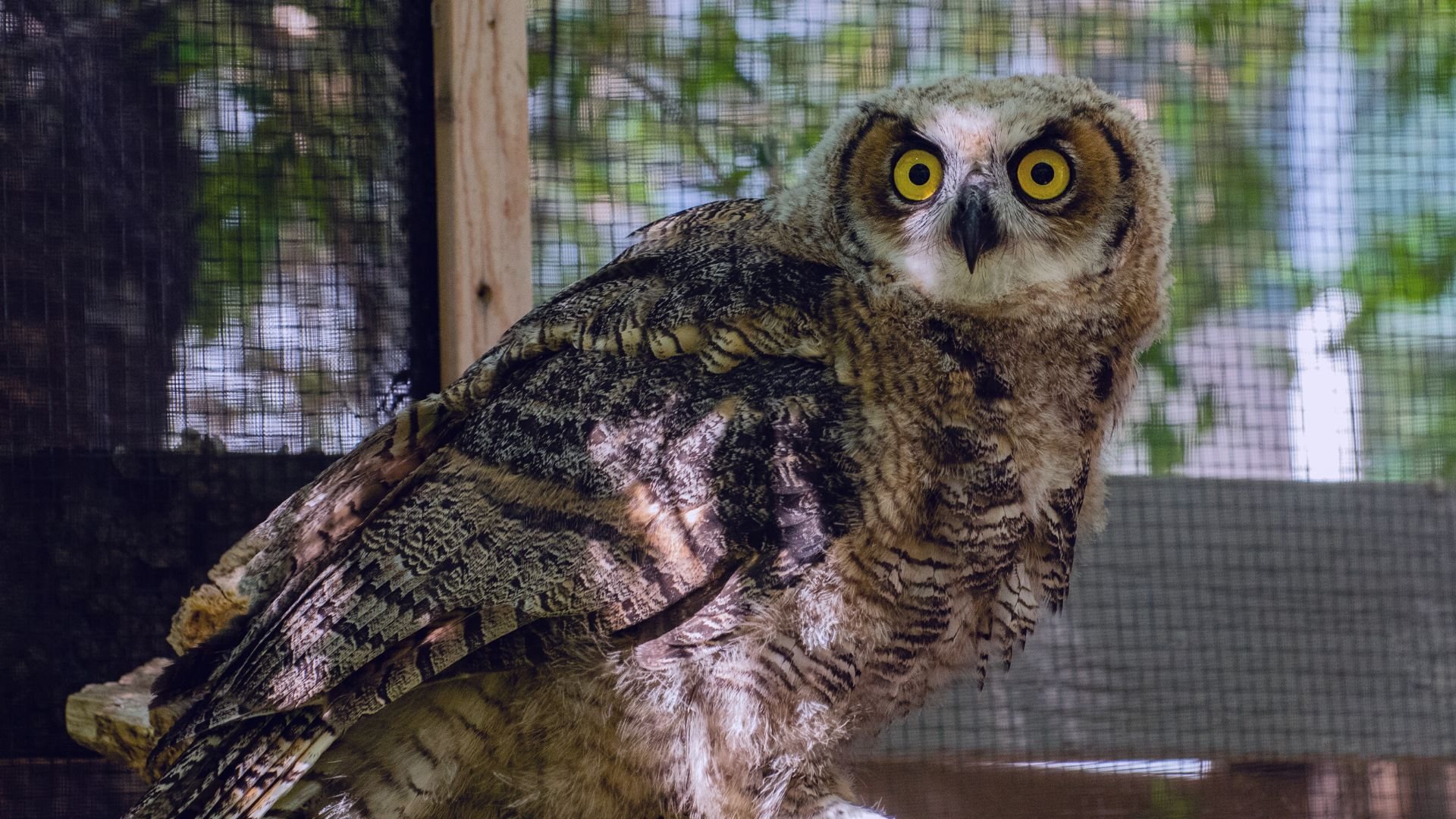What to do if you find an injured or orphaned owl or other raptor
About owls & other raptors
Raptors are known for their sharp talons, powerful beaks, and incredible eyesight that enables them to hunt and kill their prey with precision. Owls are perhaps the most well-known of the raptors, with their distinctive large eyes and silent flight. Saskatchewan alone is home to 11 species of owls at different times of the year, the most common being the Great Horned Owl. Owls are primarily nocturnal hunters, although some species also hunt during the day. Owls feed on a variety of prey, including small rodents, hares, and skunks. If you’ve ever seen an owl bob it's head up and down, this is because they cannot move their eyes and must move their whole head to gain a perspective visually! Despite their fearsome reputation as hunters, raptors are an important part of many ecosystems. They help to control populations of rodents and other pests, and they also serve as indicators of ecosystem health. Unfortunately, many raptor species are threatened by habitat loss and other human activities, so conservation efforts are crucial to their survival.
Owls & Raptors In Trouble
If you happen to come across an injured or orphaned owl or raptor, it's vital to act swiftly, safely, and responsibly to ensure that they receive the appropriate care and treatment they need. Here are some steps to take if you encounter an injured or orphaned owl or raptor:
Assess The Situation
The initial step is to carefully assess the situation. It's crucial to determine the bird's condition and ascertain whether it requires immediate medical attention. Look for visible signs of injury such as blood, limping, or an inability to fly.
If you come across a baby raptor, keep in mind that they may not be orphaned. Often, these seemingly abandoned babies have just fallen out of their nests and are still being cared for by their parents. Before taking any action, scan the area to see if the parents are nearby. If you spot them, gently place the baby on a branch and let the parents take care of the rest.
Contain the Bird
If you determine that the bird is indeed injured, the next crucial step is to ensure its safety and security until you can obtain professional assistance. By safely containing and protecting the bird from further harm, you can increase the likelihood of its successful rehabilitation. However, make sure to wear thick gloves and be mindful of their sharp talons!
There are two primary methods for safely containing a raptor, recommended by The Toronto Wildlife Centre:
Calmly approach the bird and place a container directly over it. Once contained, slide a stiff piece of cardboard, wood, or plastic under the container and use rope, bungee cords, or duct tape to secure the bottom to the container.
Toss a thick towel or blanket over the bird and let the bird grab onto the blanket with its feet. You should then be able to scoop up the entire bundle and place it in a container.
If the raptor is a young bird or a baby make sure to place them in a small cardboard box with a soft towel or cloth lining, and some kind of heat source.
Contact Professionals
After containing the injured or orphaned raptor, the next crucial step is to contact a licensed wildlife rehabilitator as soon as possible. They are trained professionals who have the necessary expertise and resources to provide appropriate care and treatment to the bird.
While waiting for their advice, it's important to keep the raptor contained in a dark and quiet place, away from any potential disturbance or stress. Do not attempt to provide any food or water to the bird, as it can cause further harm or distress to its delicate system.
More info on owls & raptors
“Owls in Saskatchewan,” Living Sky Wildlife Rehabilitation
“Sick or Injured Bird of Prey,” Toronto Wildlife Centre
“Raptor ID Fact Sheet,” National Wildlife Federation

